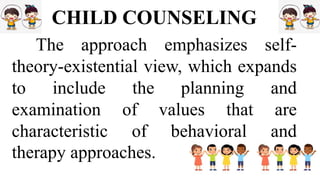Presentation1.pptx
•Transferir como PPTX, PDF•
0 gostou•8 visualizações
FS answers
Denunciar
Compartilhar
Denunciar
Compartilhar

Recomendados
Recomendados
Mais conteúdo relacionado
Semelhante a Presentation1.pptx
Semelhante a Presentation1.pptx (20)
CSE 578 Data VisualizationIndividual Contribution Report

CSE 578 Data VisualizationIndividual Contribution Report
Lesson 1 Discipline and Idea in Applied Social Science

Lesson 1 Discipline and Idea in Applied Social Science
11Introduction and Overview1. Understand the author’s.docx

11Introduction and Overview1. Understand the author’s.docx
1Person-Centered Approach to Group WorkSmall Group

1Person-Centered Approach to Group WorkSmall Group
Último
Último (20)
Python Notes for mca i year students osmania university.docx

Python Notes for mca i year students osmania university.docx
Measures of Central Tendency: Mean, Median and Mode

Measures of Central Tendency: Mean, Median and Mode
Web & Social Media Analytics Previous Year Question Paper.pdf

Web & Social Media Analytics Previous Year Question Paper.pdf
Food Chain and Food Web (Ecosystem) EVS, B. Pharmacy 1st Year, Sem-II

Food Chain and Food Web (Ecosystem) EVS, B. Pharmacy 1st Year, Sem-II
ICT Role in 21st Century Education & its Challenges.pptx

ICT Role in 21st Century Education & its Challenges.pptx
Unit-IV; Professional Sales Representative (PSR).pptx

Unit-IV; Professional Sales Representative (PSR).pptx
Unit-V; Pricing (Pharma Marketing Management).pptx

Unit-V; Pricing (Pharma Marketing Management).pptx
Z Score,T Score, Percential Rank and Box Plot Graph

Z Score,T Score, Percential Rank and Box Plot Graph
Mixin Classes in Odoo 17 How to Extend Models Using Mixin Classes

Mixin Classes in Odoo 17 How to Extend Models Using Mixin Classes
Role Of Transgenic Animal In Target Validation-1.pptx

Role Of Transgenic Animal In Target Validation-1.pptx
Presentation1.pptx
- 1. CHILD COUNSELING The approach emphasizes self- theory-existential view, which expands to include the planning and examination of values that are characteristic of behavioral and therapy approaches.
- 2. RELATIONSHIPAND TECHNIQUE Steffire and Matheny note that self theory has developed in the direction of acknowledging the importance of the relationship and of counseling attitudes while deemphasizing technique;
- 3. As Blocher indicates, the counselor will tend to respond in one of three ways: 1)immediate-intuitive response mode 2)cognitive-theoretical response mode 3)empirical-pragmatic response mode
- 4. Rogers posits the necessary and sufficient conditions for a therapeutic relationship without specific reference to technique. 1) the counselee and counselor are in contact with each other; 1) the counselee is in a state of incongruence, experiencing anxiety or vulnerability; 1) the counselor is congruent in the relationship;
- 5. 4. the counselor experiences unconditional positive regard toward the counselee; 5. the counselor experiences empathic understanding of the counselee’s internal frame of reference; 6. the counselee at least minimally perceives the counselor’s unconditional positive regard and his empathic understanding.
- 6. AN EXISTENTIALATTITUDE The existentially oriented counseling relationship embodies counselor attitudes toward the counselee that are relevant to the moment and significant to the experience underway.
- 7. As Moustakas puts it, the counselor conveys to the child by his words and his actions.
- 8. Leona Tyler has questioned the concept of personality reconstruction as an objective in counseling and has suggested that minimum change through counseling is more appropriate for many individuals.
- 9. PHASES IN COUNSELING 1.INITIATING COUNSELING The precise way of initiating counseling cannot be prescribed, yet certain guidelines may be of assistance. Attention can be given directly to the purpose of the child’s self-referral; Attention can be given to the immediate response of counselee; Attention can be given to the need of the referred child to understand why he is being seen by the counselor.
- 10. 1. PROVIDING STRUCTURE Brammer and Shostrom point out that structuring, in actuality, is a continuous process, but that “format structuring” may necessarily come early with some counselees and may need clarification at later points in their relationship.
- 11. 1.CLOSING AND INTERVIEW OR RELATIONSHIP In managing the closing, the counselor should strive for brevity and straightforwardness. Closing and Interview. Terminating a Counseling Relationship Children’s Terminal Comments.
- 12. 1. LISTENING AND FOCUSING PHASE Deep listening is crucial in all phases of counseling, but especially so in the earliest contacts. Inexperienced counselors too often zero in on the first stated concerns of the counselee, either to plan behavior change, to the explore the affective components, or to examine the history behind it.